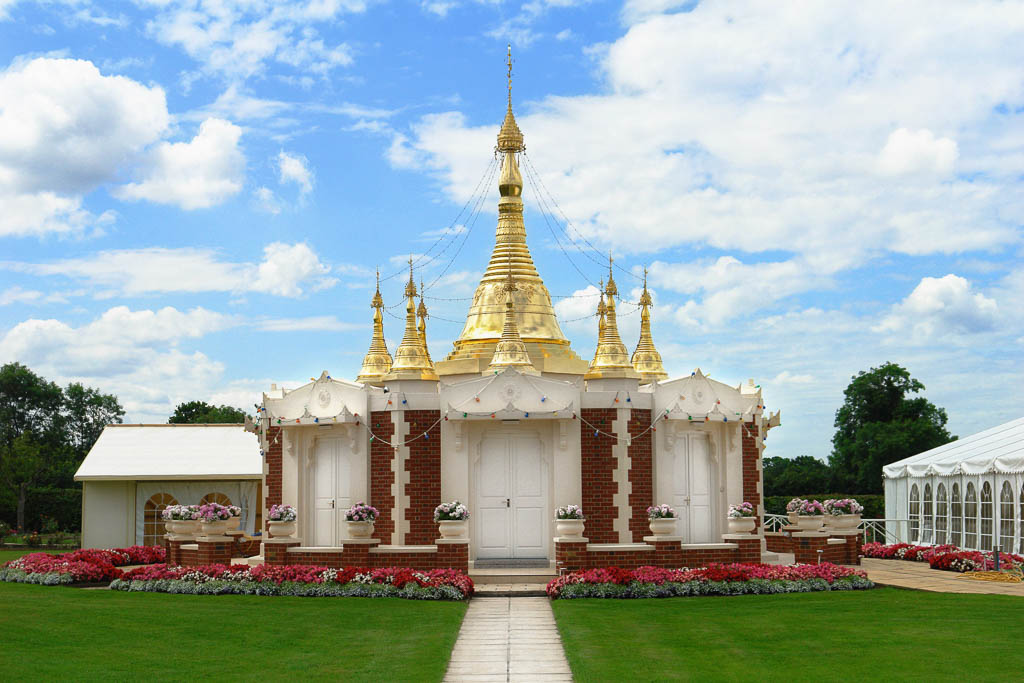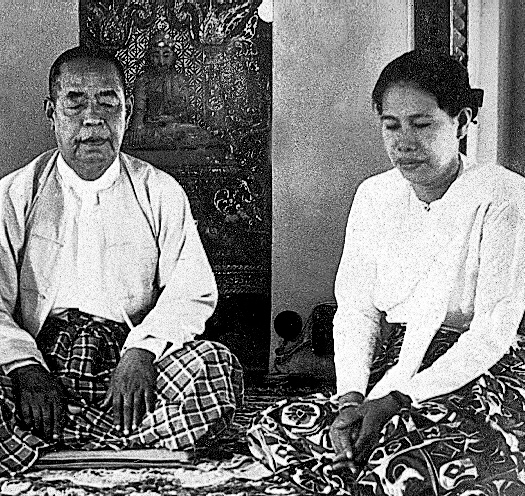
Meditation
Anapana and Vipassana
Sayaygi U Ba Khin
What is Buddhist Meditation?
Buddhist meditation consists of two steps:
Calmness of mind resulting from the development of control of the mind to one-pointedness (Samadhi) which in these courses is developed through Anapana meditation.
Insight which is achieved through Vipassana meditation.
Anapana Meditation
Students are helped to gradually develop calmness of mind during the first five days of the course by the practice of Anapana, as they focus their attention at a spot at the base of the nose observing the in-breath and out-breath and the touch of the breath.
Respiration mindfulness (anapana sati) has several advantages:
The breath is natural and common to all human beings
The breath is available at all times
Mindfulness of the breath is a technique that can be practised by members of any religion, or a person of no religion
Whenever we breathe in or out, the in-coming and the out-going air touches somewhere in or near the nostrils. The sensitive matter registers the touch of air. In this process, the entities touching are matter and the entity knowing the touch is mind. So, don’t go around asking others about mind and matter; observe your breathing and you will find out about them for yourselves.
When the air comes in, it will touch. When the air goes out, it will touch. If you know this touch continuously, then wanting, dislike, and delusion don’t have the opportunity to arise and the fires of greed, anger, and delusion will subside.
You cannot know the touch of air before it actually occurs. After it has gone, you cannot know it any more. Only while the air moves in or out can you feel the sensation of touch. This we call the present moment.
There is no reason why a good student in meditation should not be able to secure a calm mind in a few days of training.
Find out more
Vipassana Meditation
In Vipassana meditation the calmness and focus gained through the practice of anapana meditation is used to direct the attention inside and to observe in order to gain insight into the natural causes and effects. Particular attention is given to the instability and impermanence of phenomena (anicca). The aim is to investigate though one’s own wisdom the true nature of all happenings, phenomena.
Find out more
Teachers
Sayagyi U Ba Khin and Mother Sayamagyi
Sayagyi U Ba Khin and Mother Sayamagyi in the shrine room of the Pagoda at IMC Yangon
When Sayagyi U Ba Khin first started to teach, he taught people working in his office. The then prime minister of Burma, U Nu, had instructed all government departments to form Buddhist associations and practise the Teachings of the Buddha. So, Sayagyi decided to form the Accountant General’s Vipassana Association and teach meditation.
Find out more
Publications
Dhamma Texts by Sayagyi U Ba Khin
The Essentials of Buddha Dhamma in Practice
A text by Sayagyi U Ba Khin in eleven languages
Worldwide
Course Schedule
Sayagyi U Ba Khin and Mother Sayamagyi in the Dhamma Hall at IMC Yangon
Courses are held every month in the six International Meditation Centres (IMCs) and by local trusts in many countries around the world.
Find out more
International Meditation Centre Yangon, 1957
This rare footage shows the International Meditation Centre Yangon in 1957 when Sayagyi U Ba Khin was teaching there.


